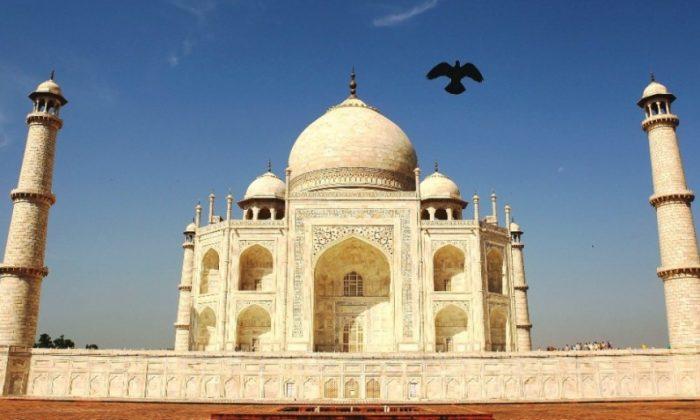India’s exquisite architectural beauty and heritage is reflected through a large number of monuments famous for their magnificence, paintings and sculptures, and historical background.
Here are a few glimpses of some of the forts, palaces, tombs, and temples.
The Taj Mahal
This famous white-marble mausoleum was built by Mughal emperor Shah Jahan in memory of his third wife, Mumtaz Mahal, in Agra. The huge bulbous dome is approximately 17 meters in diameter and 64 meters in height. The magnificent monument is renowned for its exquisite architectural beauty and is one of the Seven Wonders of the World. The Taj Mahal, regarded as the epitome of love, was completed in 17 years (in 1648).
The Hawa Mahal (The Palace of Winds)
The Hawa Mahal, a five-story pyramidal-shaped palace in Jaipur city, is made of red and pink sandstone. The palace has 953 small windows that brings in fresh breeze, giving the cooling effect its famous for. The windows are decorated with intricate criss-crossed pattern of strips to form a network, making its exterior akin to the honeycomb structure.
The Maha Bodhi Temple
The Temple is spread over an area of 4.86 hectares. The first temple in the complex was built by Emperor Ashoka in the 3rd century B.C. around the Bodhi tree, to revere the place where Gautama Siddhartha got enlightened. The main temple is 50 meters in height and dated between 5th and 6th centuries. The temple was declared as world heritage site by UNESCO for its cultural and archaeological importance.
The Qutub Minar
This red sandstone tower is 72.5 meters high making it highest stone tower of the world, built in the early 13th century. The tower narrows down from the bottom to the top, having a diameter of 14.3 meters at the bottom, while at the top it comes down to only 2.7 meters. There are a number of structures surrounding the complex, notably the mysterious Iron Pillar, Alai-Darwaza Gate, and Quwwatu'l-Islam Mosque.
The Iron Pillar
The iron pillar is one of the world’s foremost metallurgical curiosities. The pillar, almost seven meters high and weighing more than six tones, was erected by Chandragupta II Vikramaditya inside the premises of the Qutub Minar complex.
Buddhist monuments at Sanchi
The Sanchi site is a remarkable specimen of Buddhist art and architecture of the early Mauryan period (3rd century B.C. to 12th century A.D.). It is famous for stupas, monolithic pillars, temples, and monasteries. Emperor Ashoka laid the foundation of this religious centre at Sanchi and erected the Great Stupa-1, after redistribution of mortal remains of Buddha Shakyamuni. The Buddhist monuments at Sanchi was declared world heritage site by UNESCO in 1989.
The Humayun’s tomb
The Humayun’s tomb was built in A.D. 1565 nine years after the death of Humayun, by his senior widow Bega Begam. The Tomb is a landmark achievement in the development of Mughal architecture and was declared a world heritage site by UNESCO in 1993.
The Jantar Mantar
The Jantar Mantar is an astronomical observation site built by King Jai Singh II between 1727 and 1734. The observatories include a set of some 13 fixed architectural astronomy buildings of unique form, each with a specialized function for astronomical measurement. These structures with combinations of geometric forms at large scale have stunned architects, artists, and art historians worldwide.
The Red Fort of Agra
The Red Fort Complex, also known as Lal Qila, finds a mention in the UNESCO’s World Heritage Sites list. It’s a palace fort built in the 17th century by Shahjahan as part of his new capital city of Shah-jahan-abad. The 94 acre fort has a semicircular plan and its walls are 70 feet high.
The Charminar of Hyderabad
The enormous Charminar, with its four towers soaring to a height of 48.7 meters each, is made of granite, limestone, and pulverized marble. It was built by Qutub Shah in 1591 in the heart of Hyderabad city. The intertwined arches and domes of Charminar are designed as per Islamic architecture.
The Victoria Memorial
The Victoria Memorial located in Kolkata city was built during British period as a memorial of Queen Victoria of the United Kingdom. It was designed by a British architect William Emerson and inaugurated by the Prince of Wales. It houses a museum having an assortment of Queen Victoria memorabilia, British rule paintings, and other displays.






Friends Read Free